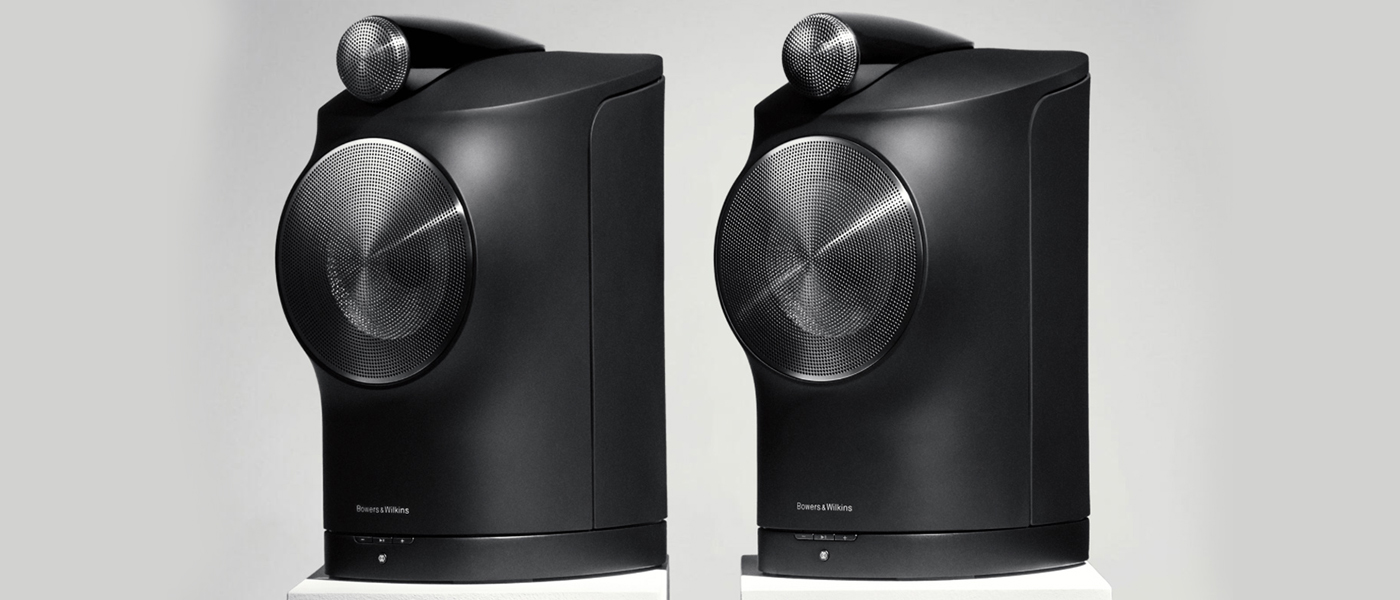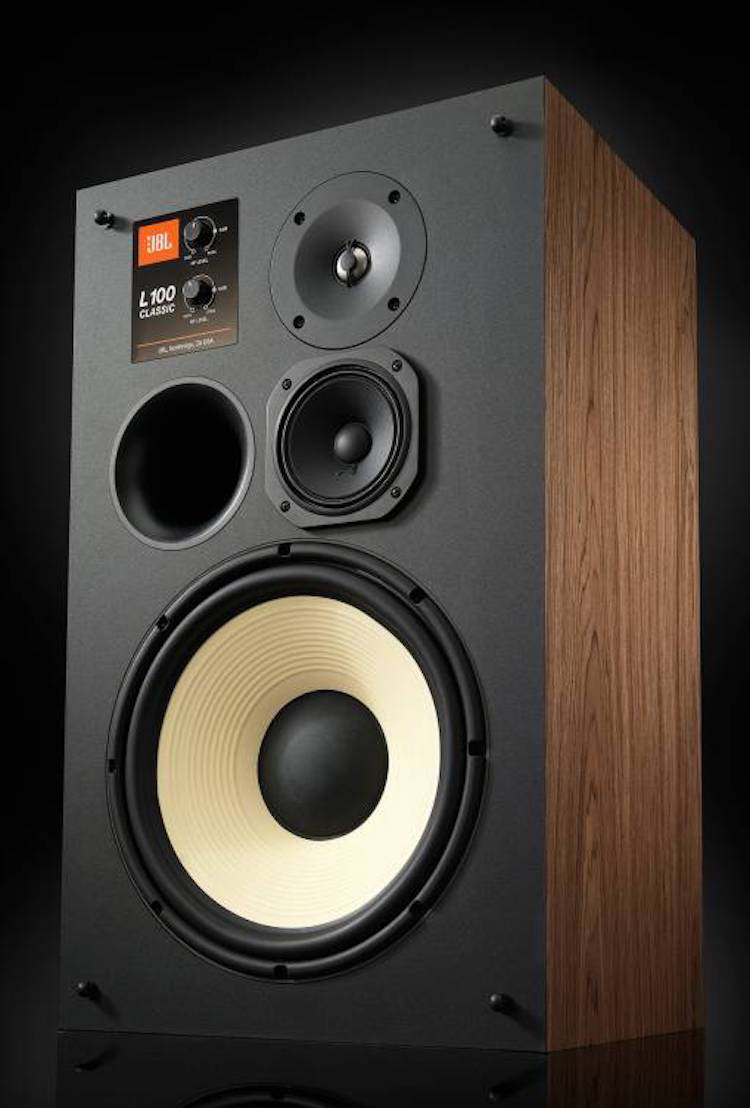
The JBL L100 Classic speakers are a mix of the old and the new. For the old, there’s the awesome walnut-veneer cabinets with their textured open-cell foam grills in either orange, blue, or black. There are the famous white-cone 12” woofers. There’s also the fact that JBL didn’t bother to mirror-image their drivers, and that the trim pots on the front baffle for the midrange and treble are still active, allowing users to dial in the frequency response to suit their room.
As for the new, this speaker sports butyl-rubber surrounds for the woofers, ensuring long-term durability in any climate, improved midrange cones with greater frequency-response linearity, and tweeters in their own horn molding for better dispersion and higher efficiency.
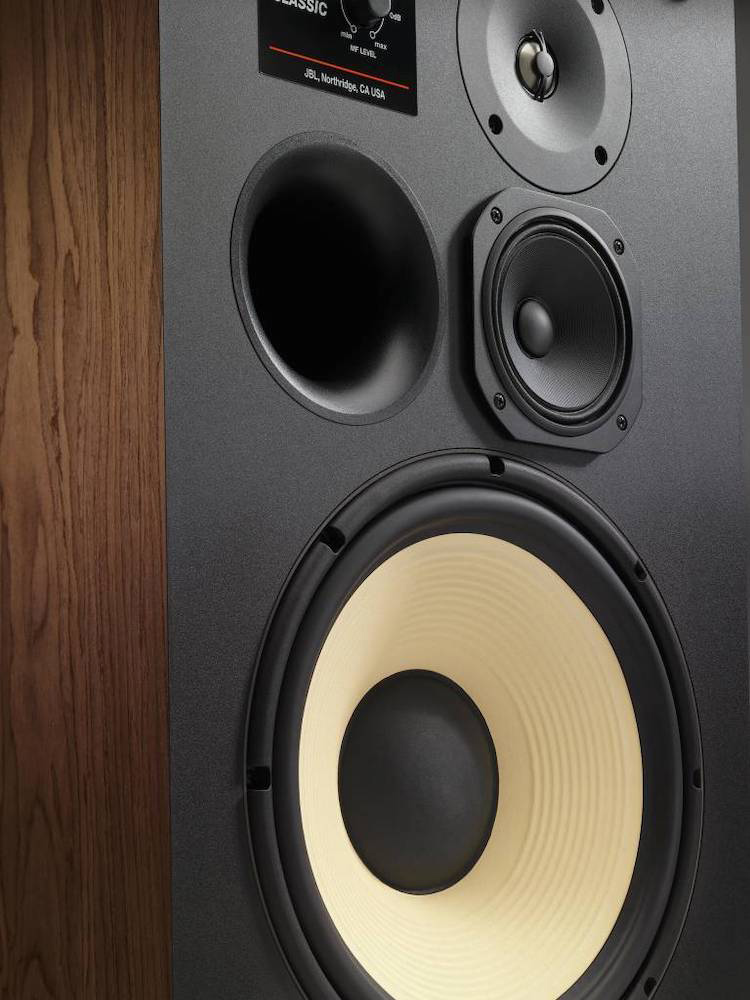
JBL L100 Classic Speakers
- The JBL L100 Classic is a worthy successor to the original L100A Century speaker, derived from the 4310 Studio Monitor
- The variable midrange and treble level-dials allow matching to the room
- The white paper cone woofer scores serious reminiscence points for previous L100 owners
- Beautiful walnut veneer cabinets
- Iconic squared foam blocks (quadrex) grille in classic orange, blue, or black colors
- Updated drivers do away with treble peaks and midrange emphasis
- Surprising imaging both with and without the grills on
The JBL L100 Classic speakers harken back to the 1970s (at least in appearance). My first encounter with the JBL sound was in the early ‘70s. In my second-floor student apartment, I’d proudly hooked up my new JBLs and quickly threw the Who’s new album “Tommy” on the turntable. Being a cool Fall day, and with the windows facing the treetops, my windows were open and my groove was on. When “Pinball Wizard” started, I happened to wander over to the windows and found all my neighbors gathered downstairs enjoying the music along with me. What else could I do? I invited them all up and the party started!
The sound of JBL speakers holds a nostalgic good vibe in my memories, and although I later gave in to the allure of the more linear and restrained “New England sound” of my AR-11a speakers, I’ve never forgotten the excitement of the JBLs.
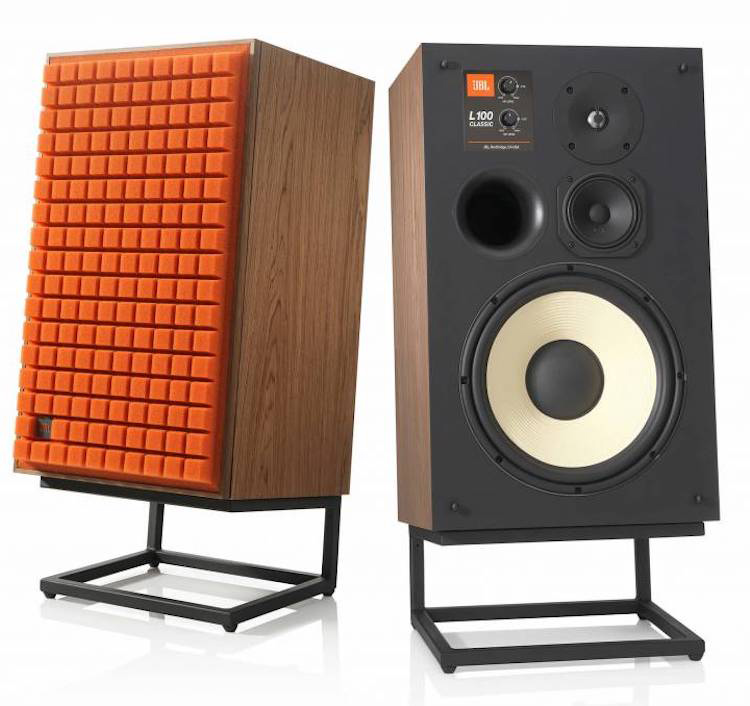
The JBL L100 Classic speakers are a very smart freshening of the 1970s versions. While retaining the appearance of the earlier JBLs, the new L100 Classics update the SOUND of the speakers in myriad ways. And the update is definitely successful. The new speakers sound like 21st-century audiophile winners, not 1970s leftovers (even though the actual introduction of the original L100 speakers was in 1969).
The JBL company was founded by James B. Lansing (1902-1949), who founded both Altec-Lansing and JBL. The current JBL company (owned by Harman International Industries, a subsidiary of South Korean company Samsung Electronics) has both consumer and professional audio divisions. The L100 Classic is a product of its consumer division.
Description:
3-way bookshelf loudspeaker
Low-Frequency Transducer:
12-inch (300mm) pure pulp cone woofer (JW300PW-8)
Mid-Frequency Transducer:
5.25-inch (125mm) polymer-coated pure pulp cone (105H-1)
High-Frequency Transducer:
1-inch (25mm) titanium dome with soft surround (JT025TI1-4)
Frequency Response:
40Hz – 40kHz (-6dB)
Sensitivity:
90dB (2.83V/1m)
Power Handling:
25 – 200 watts RMS
Crossover:
450 Hz / 3.5K Hz
Impedance:
4 ohms nominal
Controls:
Attenuators for MF & HF drivers
Connectors:
5-way gold-plated binding posts
Dimensions (HxWxD):
25.06 x 15.34 x 14.625 inches (636.52 x 389.64 x 371.48mm)
Weight:
58.5 lbs (26.7 kg)
Finish:
Genuine walnut veneer enclosure with Quadrex foam grille (black, burnt orange or dark blue)
Price:
$4,000/pair
Company:
SECRETS Tags:
JBL, bookshelf speakers, classic, L100, James B Lansing, Bookshelf Speakers Review 2019
During the review, I had the opportunity to ask questions of JBL’s Chris Hagen, Principal Systems Engineer, at Harman. Those questions and his answers are as follows:
1. Other than a cosmetic resemblance to the original L100 speakers, what were the specific design goals of the L-100 Classics?
We had one guiding purpose in the L100 Classic project. That was to create a new speaker worthy of the L100 model name by being visually identifiable as an L100, yet would be designed with current technologies and methods to be the best-sounding speaker that it could be.
2. Why are the L100 Classic drivers not mirror-imaged?
We wanted the midrange and tweeter in a linear vertical array for the best imaging. But with the size of the woofer, this would enlarge the cabinet to be a lot bigger than an L100 if we lined them up on the woofer center. So, our team looked at moving them to one side. At the crossover point between woofer and midrange that worked best, we found that the needed offset to keep the cabinet “an L100” (size) was only 1/15 of a wavelength. This offset proved to be unnoticeable in our testing and listening and allowed us to not mirror-image the model. This eliminated a need to match left and right speakers in inventory or to create an unnecessarily large and heavy pair pack carton.
3. Are the “zero” or “index” positions for the midrange and tweeter pads the positions where the anechoic measurements of the speakers are most nearly flat?
Yes. The overall system is actually designed with the midrange and tweeter at a higher level so that the driver controls can reduce their levels to flat at the 0 dB marking.

4. Why are the L100 Classic grills not designed for minimum reflection/refraction (their thick frame could interfere with the best imaging)?
We wanted the new L100 Classic to embody as much of the old L100 Century as possible. It turned out that the foam damped out the diffraction wave from the back panel edges. As the foam actually has a very broad, or low Q, effect of on the frequency response, it actually has less effect than most grilles.
5. Would you compare and contrast the L100 Classics against the JBL L4319 and the JBL 4429 speakers that are likely to be of interest to customers in roughly the same price range?
Since the 4319 and 4429 are studio monitors and the 4429 is horn-based but the 4319 cone- and dome-based, they each have their own slightly different character from the L100 Classic. All three are really great speakers for their intended use, so it is best to listen to them and get the one that you like best.
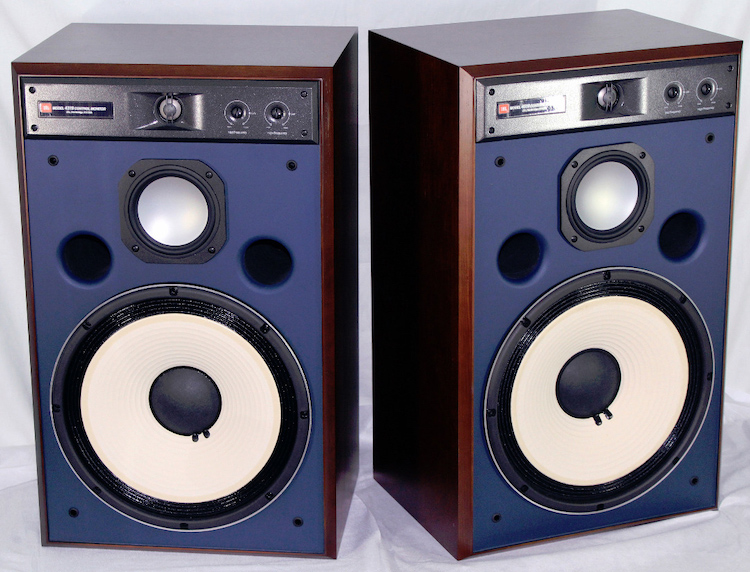
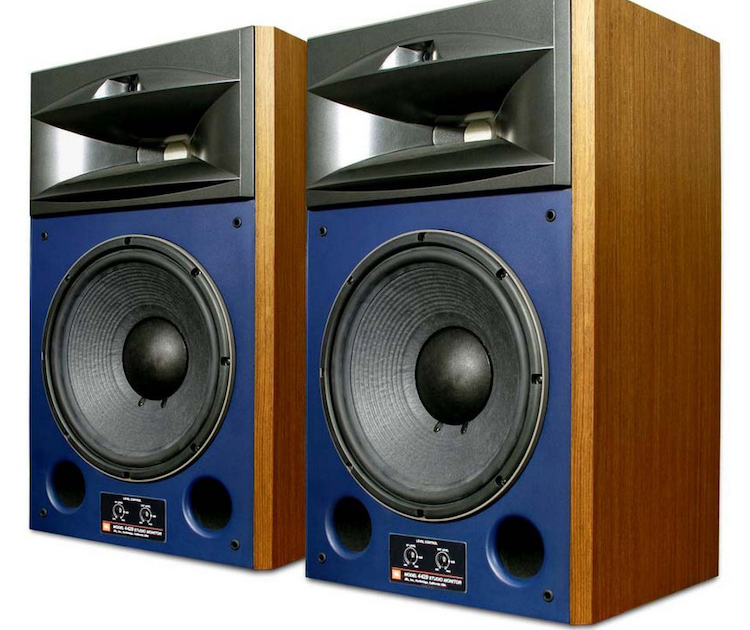
6. If you had to pick a single virtue that you felt was paramount in the L100 Classic, what would it be?
The L100 Classic makes music fun again and makes you want to get up and dance.
7. If you had to pick a single weakness that you felt was inherent in the L100 Classic design, what would it be?
Since it is exactly what we intended it to be, we don’t feel that there is a weakness.
8. If the design budget for the L100 Classic had been one or two thousand dollars more, what aspect(s) of the L100 Classic would be different?
There was really no budget limit – the L100 Classic was shaped by the desire to make a speaker that was immediately identifiable as an L100 visually, but housed a great-sounding speaker system designed to our modern standards.
9. What amplifiers were used to voice the L100 Classics?
In the lab, we use JBL Professional MPX1100 amplifiers; for listening, we have used the Mark Levinson No.585 and No.532H’s in the MLL. The L100 Classic works well with any good amplifier and sounds great in our tradeshow demos with Arcam amplifiers such as the SA20.
10. Other than the JBL JS-120 stands, are there any other recommended stands for the L100 Classics?
Not specifically. We like to aim the tweeter toward the ear, so lower stands like the JS-120 should be angled upwards toward the ear. But the L100 Classic sounds just as good and images great on flat-topped stands as long as the tweeter is close to ear height.
Immediately upon receipt of the speakers, I was shocked to see the box damage that had occurred in shipping. One side of one shipping box was virtually torn in two. I took copious photos before opening the box, but to my surprise, I found that the speaker had sufficient crush space around it that there was no damage discernable to the speaker itself. Yay! And kudos to the designers of the speaker boxes in the factory.
I did frequency check the two speakers to satisfy myself that they had no hidden driver damage from the rough handling, but all was well.
The speakers are bulky, so it might help to have an assistant for unboxing if you have a weak back.
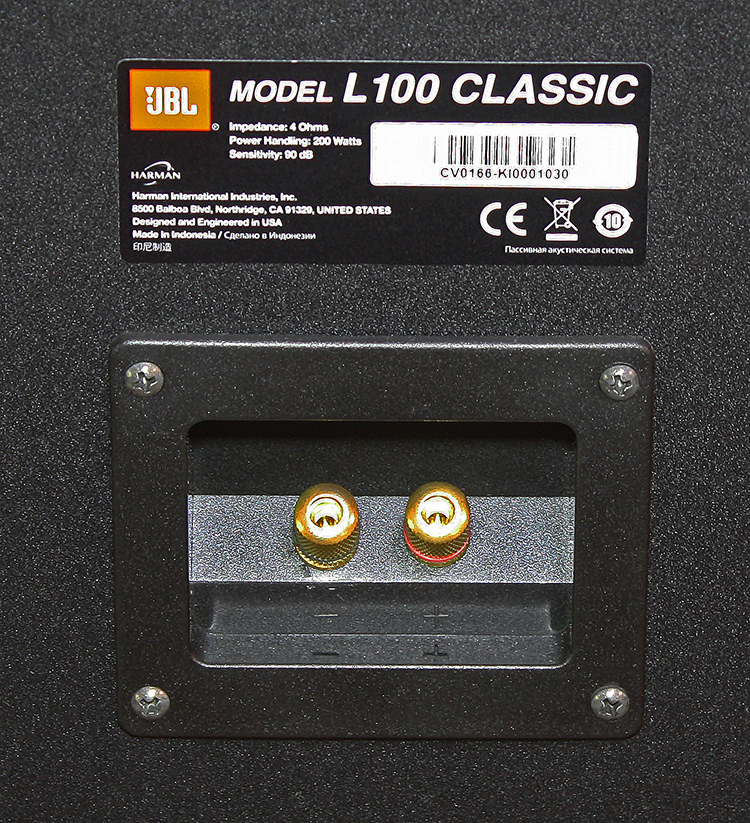
The speakers are not equipped for bi-wiring, so a single-pair speaker wire is sufficient. Don’t think of this lack as a shortcoming. Many excellent speaker designers (including the late, great Jim Thiel) thought that bi-wiring was an unnecessary affectation that added nothing to the speakers’ performance. The terminals on the L100s are of high quality and work just fine.
The JBL L100 Classic speaker surprised me from the first use. I remembered some of my previous JBL speakers (that used a cone tweeter) as having a very pronounced treble peak. With the new JBL L100 Classic speakers, that peak is totally gone. I also remembered some of my previous JBL speakers as having a very punchy bass peak. With the new L100s, that peak is attenuated to the point of being virtually inaudible unless you’re specifically looking for it. I remember some of my previous JBL speakers as having a somewhat ragged and peaky midrange that could put the vocalist in your lap, but with obvious modification to the tone of orchestral instruments. With the new L100s, the midrange can be whatever you want it to be.
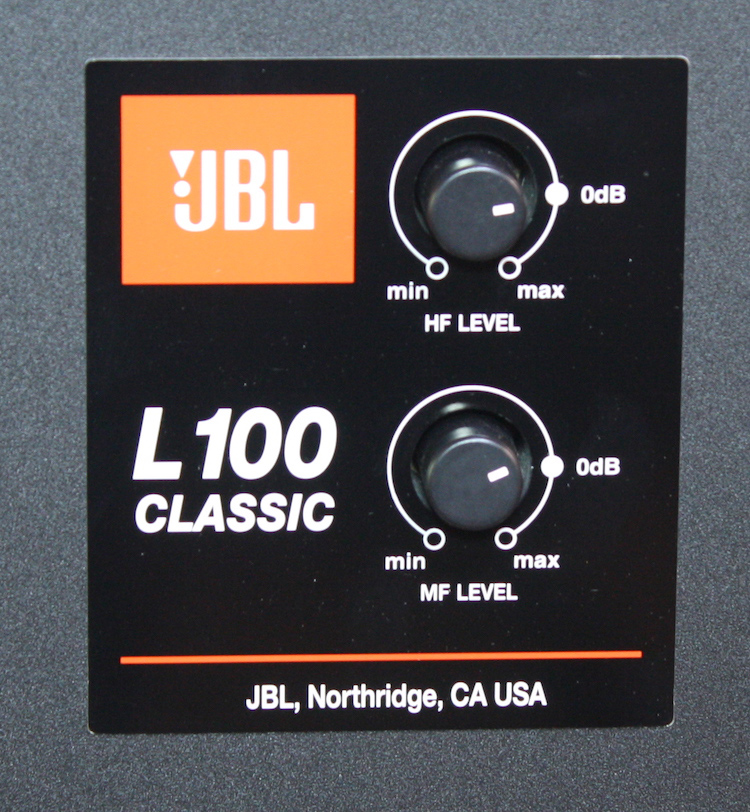
So, let me explain that last sentence a bit more… Unlike just about any other speaker on the market these days, the JBL L100 Classic has volume-adjusting pots for its midrange and treble drivers. Purists turn their noses up at the very idea that mere customers should have the power to alter the designer’s intended frequency response, and especially in the important midrange and treble ranges. How dare they! But the controls are actually highly useful. Is your room a bit bright and echoey? A slight downward click on the midrange and/or treble pots makes the sound just perfect. Is your room a bit overdamped with thick carpets, cushy furniture, and maybe even sound absorbers on the walls? A slight upward click on the midrange and/or treble pots, again, makes the sound just perfect.
I don’t know why (other than expense and snobbery) it’s become common to eliminate the midrange and treble adjusting pots from speakers, but their utility is undeniable. The adjusting pots make the JBL L100 Classics more likely to work well in a wide variety of rooms than just about any other speaker I’ve heard in the past decade. Chew on that, audiophile brands!
It doesn’t really matter how good the speaker sounds in an anechoic chamber – customers actually LISTEN to the speakers in real rooms. Real rooms have real problems. Some are asymmetrical from side to side or front to back, some are over/underdamped, and some have unavoidable compromises due to their use as multi-purpose rooms. Since these JBL speakers can be individually adjusted for midrange and treble output, they can be tuned to work in the imperfect room more perfectly. That’s worth something!
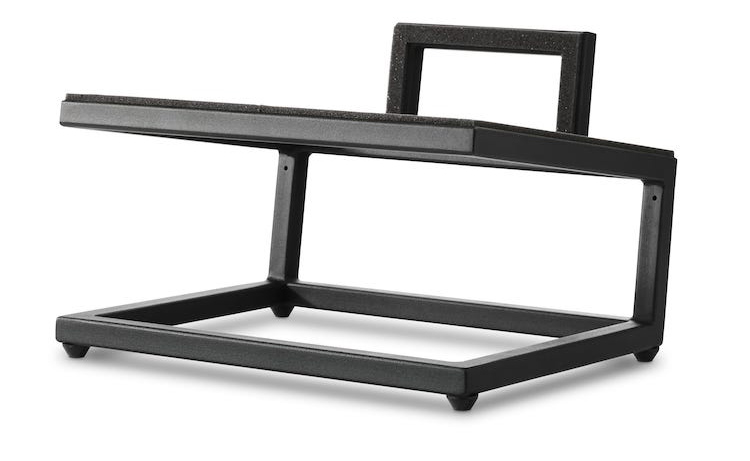
Since JBL did not include a pair of their factory-recommended JS-120 stands, I used some non-tilt-back stands that I had in a closet, and they worked just fine. What immediately struck me about the JBL L100 Classic speakers was their imaging. These speakers threw a wide and deep image even with their grilles on. This is unusual. Normally, I have to do an hour or two of “speaker dancing” to get good imaging, but right away, the JBLs performed.
The initial impression also seemed to me to reveal a slightly bright and forward sound from the speakers. After giving the speakers a couple of days to break in, the forward impression persisted. So, I decided to adjust the speakers’ Medium-Frequency (MF) and High-Frequency (HF) attenuators by a click or two downward. WHOA! What an improvement – the edginess and peakiness was completely (completely) gone, and now the speakers sounded as good as some other speakers I’ve heard with list prices of more than twice the JBL’s.
Now that the speakers were optimized for my room, I gave them a further workout with some movie sound (no subwoofers – the JBLs had to run full range), and the speakers really impressed me with not only their imaging and phantom center dialogue, but also with their reach into the bass for sound effects, explosions, and nearly-sub-sonic effects that even some subwoofers couldn’t do as well. The 12” cone on the L100’s woofers is able to provide low frequencies at both high volume and low distortion.
Were I to buy these speakers, I’d use industrial-strength, self-stick Velcro to fasten them to their stands. Should a pet or a child tip these off the stands, the speakers are heavy enough to do serious damage. With the factory-recommended tilt-back stands, this would be less of a concern, but with after-market stands that place the speakers higher from the floor, look for a broad base that can be weighted and/or spiked to provide extra stability, and a means to secure the speakers to their stands.
After flexing the woofers with some movie sound, I began listening in earnest.

Starting with the New Orleans Jazz and Heritage Festival box set, I particularly like Clarence “Gatemouth” Brown’s rendition of “Take the A Train.” Keeping in mind that all the music is recorded live, Gatemouth sounds present and as clean as I’ve heard over the big JBLs.

The YouTube performance of Goran Brevogic’s 2007 live performance, (one that I’d absolutely LOVE to buy a CD of, but have never been able to find) stands out for its sheer fun.
“Kalashnikov” is not only fun music, but you can see that the live crowd is also really into it. If you want your hair to stand on end, check out the scary “In the Death Car, We Are Alive.” Either way, the band sounds great, and the music is hard to resist. The JBLs present this music as well or better in my room as with any other speaker I’ve heard.

One of my fave bands, Balkan Beat Box, plays so many great original songs. My favorites include “Move It,” “Bulgarian Chicks,” “Dancing With the Moon,” and “Joro Boro.” Once again, the JBL L100 Classics infuse this music with foot-tapping, “get up and dance” demands that are hard to ignore. Most speakers smooth out these performances, but the JBLs really bring them to life.
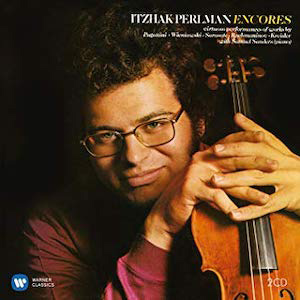
The CD of Itzhak Perlman’s Favorite Encores – Every single cut on this great CD is stunning. Mr. Perlman is a GREAT violinist, and unfortunately, he probably won’t get the kudos he deserves until he’s gone. So, this music is radically different from the other music that I’ve auditioned on the JBL L100 Century speakers.
I deliberately selected this disc because I wanted to see how well the speakers could portray the duo of violin and piano. Would the violin be screechy? Would the piano sound tinny? I’m happy to say that the JBLs rose to the challenge. Not only were both instruments reproduced with realistic fundamentals and overtones, but the acoustics of the original recording venue were often audible.

The wild & crazy Googol Bordello tickles me with “Avenue B,” “Immigrante,” and “Be That Man.” Hutz’s voice sounds present, natural, and relaxed over the JBLs and the dynamics are really striking.
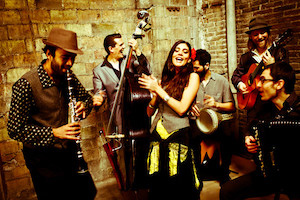
The Barcelona Gipsy Klezmer Orchestra sometimes isn’t quite as well recorded as some of the other music on this list, but even when the microphones sound like they’re on the verge of overloading, you can still hear deeply into the recording with the JBL L100s.
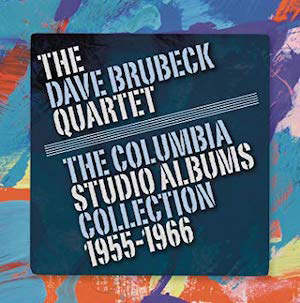
The Dave Brubeck box set is pure jazz joy. The discs sound far better than previous copies of this music that I’ve heard. And the classics-of-the-age cuts “Blue Rondo ala Turk” and “Take Five” have never sounded better. Great fun, and thanks, JBL for making the speakers live up to the potential of the music.
The following measurement was taken one meter from the center of the speaker with no grille installed. The calibrated UMIK-1 microphone was used with Room Equalization Wizard (REW) software.
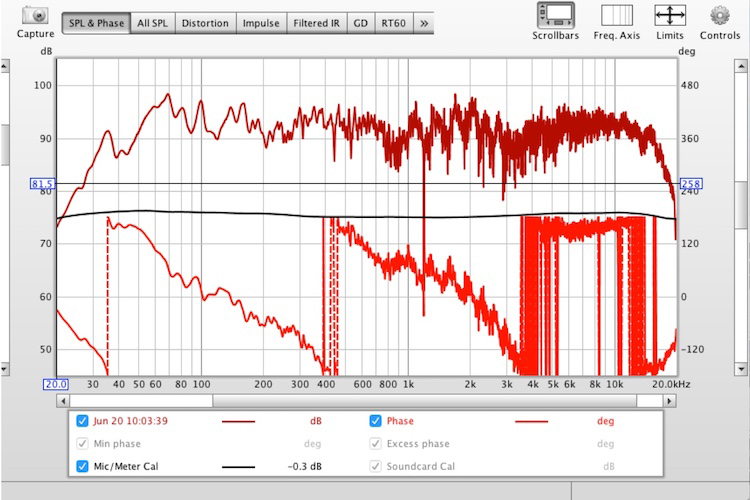
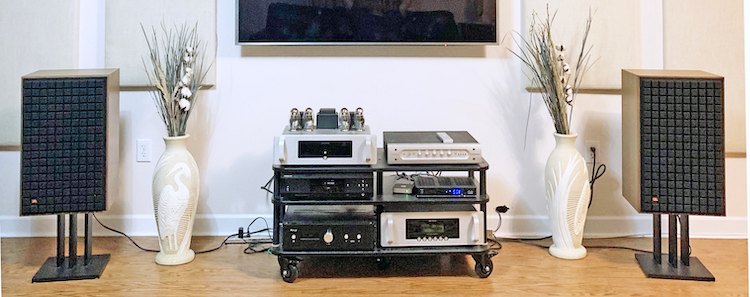
The JBL L100 CLASSIC SPEAKERS are not only nostalgic but also fully developed and highly adaptive 21st-century classics. Bravo JBL!
- Classic JBL appearance with classic Quadrex foam grills in fun colors
- Beautiful real walnut finish
- Surprising imaging either with or without the grilles on
- Mid and high frequency adjustment pots for perfect room-matching
- Audiophile performance from a plain box speaker
- Either stands included with speakers or a means of locking the speakers to the stands to prevent accidental tip-overs
- A frequency-response graph included with speakers showing the effects of the adjustment pots
I believe that JBL has succeeded, in their L100 Classic speaker, in creating a worthy successor to their previous studio monitor. The sound is excellent, and the MF/HF adjustment dials are instrumental in making the speaker a far more flexible performer, able to integrate into almost any room.


